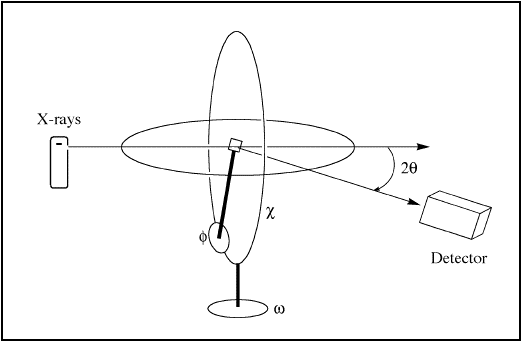From the beginnings of X-ray crystallography through the 1950's, data
collection was performed, almost exclusively, by photographic methods. These photographic techniques include
Rotation, Precession, and
Weissenberg photography.
In the 1960's, the introduction of the automated diffractometer made the routine of data collection simpler
and more efficient. Below is a schematic of a popular form of the so-called “four circle diffractometer”.

Whereas the various photographic techniques are easily understood as interactions between X-rays and the
reciprocal lattice, the four-circle diffractometer is, perhaps, best explained as a “Bragg's Law Machine”.
The χ and φ angles serve to orient the Bragg reflecting plane into a vertical orientation (so that
the incident and reflected beams are in the horizontal plane). The ω and 2θ angles then establish the
incident θ and reflected θ angles, respectively.





